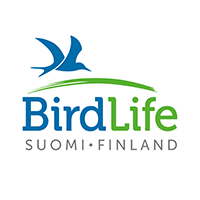Migratory protogyny and condition-dependent arrival in Icelandic Red-necked Phalaropes
DOI:
https://doi.org/10.51812/of.143438Keywords:
Migration, Protogyny, Condition, Hematological parameter, Leukocyte profileAbstract
In many migratory birds, arrival at breeding grounds is sexually asynchronous. This pattern is often explained by the idea that early arrival benefits the sex under stronger sexual selection by improving access to mates through territoriality. However, in species where females arrive first and are non-territorial, this explanation falls short. One alternative is that early-arriving females are simply in better condition. Here we report, for the first time, evidence of migratory protogyny in the Icelandic population of Red-necked Phalaropes (Phalaropus lobatus), a shorebird with reversed sexual dimorphism. We also present the first direct test of the condition-dependent hypothesis in a protogynous species, using arrival data, morphometric measurements, and leukocyte profiles. Although females arrived significantly earlier than males, we found no evidence that early arrival was linked to superior body condition. Leukocyte profiles did not suggest marked sex differences either, although we had insufficient statistical power to test this. Our results point instead to the role of sex-specific migratory strategies and intrasexual competition in shaping arrival timing. With its unique life history, P. lobatus offers a powerful model for studying the evolution of sex-biased migration. We encourage further research integrating fine-scale tracking, reproductive monitoring, and physiological data to better understand ...
References
Bennett, G. F. 1970: Simple techniques for making avian blood smears. — Canadian Journal of Zoology 48: 585–586. https://doi.org/10.1139/z70-098
Coppack, T. & Pulido, F. 2009: Proximate control and adaptive potential of protandrous migration in birds. — Integrative and Comparative Biology 49: 493–506. https://doi.org/10.1093/icb/icp029
Davis, A. K., Maney, D. L. & Maerz, J. C. 2008: The use of leukocyte profiles to measure stress in vertebrates: a review for ecologists. — Functional Ecology 22: 760–772. https://doi.org/10.1111/j.1365-2435.2008.01467.x
Deakin, J. E., Guglielmo, C. G. & Morbey, Y. E. 2023: Covariation between protandry and sexual size dimorphism is age specific in songbirds. — Journal of Ornithology 165: 157–167. https://doi.org/10.1007/s10336-023-02082-8
Eikenaar, C., Hessler, S. & Hegemann, A. 2020: Migrating birds rapidly increase constitutive immune function during stopover. — Royal Society Open Science 7: 192031. https://doi.org/10.1098/rsos.192031
Eikenaar, C., Ostolani, A., Hessler, S., Ye, E. Y. & Hegemann, A. 2023: Recovery of constitutive immune function after migratory endurance flight in free-living birds. — Biology Letters 19: 20220518. https://doi.org/10.1098/rsbl.2022.0518
Gätke, H. 1895: Heligoland as an ornithological observatory; the result of fifty years’ experience. — David Douglas, Edinburgh. https://doi.org/10.5962/bhl.title.28887 URL: https://www.biodiversitylibrary.org/bibliography/28887
Harvey, C., Baliga, V. B., Wong, J. C. M., Altschuler, D. L. & Inman, D. J. 2022: Birds can transition between stable and unstable states via wing morphing. — Nature 603: 648–653. https://doi.org/10.1038/s41586-022-04477-8
Hatch, M. I., Smith, R. J. & Owen, J. C. 2010: Arrival timing and hematological parameters in Gray Catbirds (Dumetella carolinensis). — Journal of Ornithology 151: 545–552. https://doi.org/10.1007/s10336-009-0487-y
Jehl, J. R. 1986: Biology of red-necked phalaropes (Phalaropus lobatus) at the western edge of the great basin in fall migration. — The Great Basin Naturalist 46: 185–197. URL: https://www.jstor.org/stable/41712210
Kissner, K. J., Weatherhead, P. J. & Francis, C. M. 2003: Sexual size dimorphism and timing of spring migration in birds. — Journal of Evolutionary Biology 16: 154–162. https://doi.org/10.1046/j.1420-9101.2003.00479.x
Krietsch, J., Cragnolini, M., Kuhn, S., Lanctot, R. B., Saalfeld, S. T., Valcu, M. & Kempenaers, B. 2022: Extrapair paternity in a sequentially polyandrous shorebird: limited evidence for the sperm storage hypothesis. — Animal Behaviour 183: 77–92. https://doi.org/10.1016/j.anbehav.2021.10.021
Lindström, Å. 2020: Migration tracks of waders: avoiding the pitfalls of speed estimates and inferred strategies. — Wader Study 127: 2–3. DOI: 10.18194/ws.00181 URL: https://www.waderstudygroup.org/article/13504/
Morbey, Y. E., Coppack, T. & Pulido, F. 2012: Adaptive hypotheses for protandry in arrival to breeding areas: a review of models and empirical tests. — Journal of Ornithology 153: 207–215. https://doi.org/10.1007/s10336-012-0854-y
Morbey, Y. E. & Hedenström, A. 2020: Leave earlier or travel faster? Optimal mechanisms for managing arrival time in migratory songbirds. — Frontiers in Ecology and Evolution 7: 492. https://doi.org/10.3389/fevo.2019.00492
Nebel, S., Bauchinger, U., Buehler, D. M., Langlois, L. A., Boyles, M., Gerson, A. R., Price, E. R., McWilliams, S. R. & Guglielmo, C. G. 2012: Constitutive immune function in European starlings, Sturnus vulgaris, is decreased immediately after an endurance flight in a wind tunnel. — Journal of Experimental Biology 215: 272–278. https://doi.org/10.1242/jeb.057885
Peig, J. & Green, A. J. 2009: New perspectives for estimating body condition from mass/length data: the scaled mass index as an alternative method. — Oikos 118: 1883–1891. https://doi.org/10.1111/j.1600-0706.2009.17643.x
Reynolds, J. D., Colwell, M. A. & Cooke, F. 1986: Sexual selection and spring arrival times of Red-Necked and Wilson’s Phalaropes. — Behavioral Ecology and Sociobiology 18: 303–310. https://doi.org/10.1007/BF00300008
Rubega, M. A., Schamel, D. & Tracy, D. M. 2020: Red-necked Phalarope (Phalaropus lobatus). — In Birds of the World. Billerman, S. M., Keeney, B. K., Rodewald, P. G. & Schulenberg, T. S. (eds.) Cornell Lab of Ornithology. https://doi.org/10.2173/bow.renpha.01
Sullivan, T., N., Meyers, M. A. & Arzt, E. 2019: Scaling of bird wings and feathers for efficient flight. — Science Advances 5: 4269. 10.1126/sciadv.aat4269
van Bemmelen, R. S. A., Kolbeinsson, Y., Ramos, R., Gilg, O., Alves, J. A., Smith, M., Schekkerman, H., Lehikoinen, A., Petersen, I. K., Þórisson, B., Sokolov, A. A., Välimäki, K., van de Meer, T., Okill, J. D., Bolton, M., Moe, B., Hanssen, S. A., Bollache, L., Petersen, A., Thorstensen, S., González-Solís, J., Klaassen R. H. G. & Tulp, I. 2019: A migratory divide among Red-Necked Phalaropes in the Western Palearctic reveals contrasting migration and wintering movement strategies. — Frontiers in Ecology and Evolution 7: 86. https://doi.org/10.3389/fevo.2019.00086
Downloads
Published
Issue
Section
License
Copyright (c) 2022 Oscar García Miranda, Pedro Rodrigues, Tamás Székely, Renáta Szarvas, José O. Valdebenito

This work is licensed under a Creative Commons Attribution 4.0 International License.








